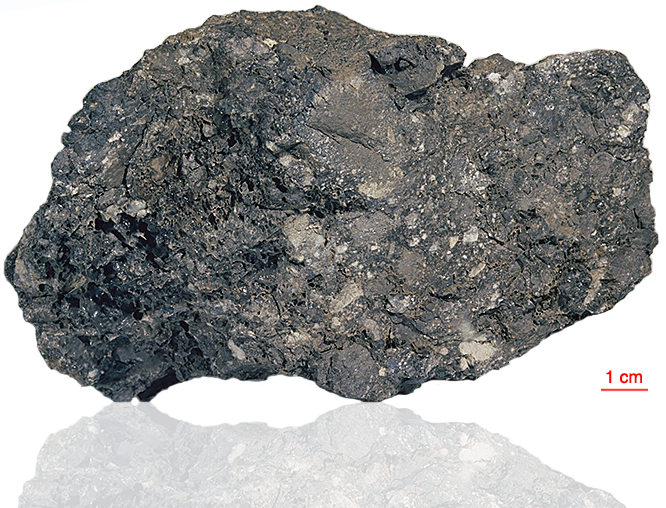
Fact sheet
68115 is a heterogeneous breccia which is welded together by flow-banded glass. The sample appears to be made up of a wide variety of impact melts, with a variety of recrystallized textures. They generally include relict plagioclase clasts. The commonly aluminous composition and frequent large plagioclase inclusions indicate that the precursor material was ferroan anorthosite. The sample contains abundant schreibersite and some metallic iron. Rotation point 1 focuses on a crystal of pink spinel, while in rotation 2 a basaltic clast containing many hollow-cored plagioclase feldspars dominates the field of view.
The sample weighed 1190 grams before analysis and has not been dated.
Further details of this and other Apollo samples are here: http://curator.jsc.nasa.gov/lunar/
The Apollo 16 landing site was in the hilly region around Descartes crater in the lunar highlands. The landing spot was chosen to allow the astronauts to gather geologically older lunar material (Descartes Formation and the Cayley Formation) than the samples obtained in the first four landings, which were in or near lunar maria.
The mission lasted 11.1 days, with a stay on the lunar surface of 71 hours. The crew were on the lunar surface for 20.2 hours during which they traversed approximately 27 kilometers and collected approximately 96 kilograms of samples.
Apollo 16 was launched on 16 April 1972.






